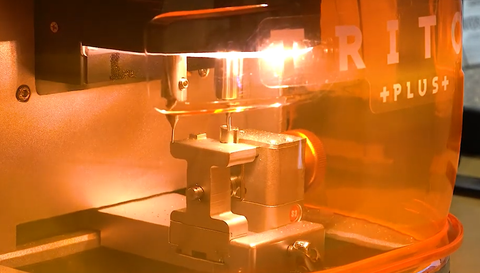on all orders over $150*
on all orders over $150*
on all orders over $150*
on all orders over $150*

When it comes to cutting tubular keys, at times, it can be a pain. At the same time, they can be highly profitable and very niche, and it's a great way to grow your key-cutting business. But when it comes down to the nitty-gritty of cutting the keys, it can be challenging at times. Your options are:
But today, you can cut a tubular key using the Triton Plus by making it a bit interesting and have a little fun at the same time.
This tubular key comes from a brand new cam lock off the shelf. But, we're going to pretend that we have no idea what the code series is, and this just came into our door. We'll do the essential standard key trace and cut and test it on a cylinder.

If a machine can make your job easier and fun, it's a good investment.
DECODING AND CUTTING A TUBULAR KEY
Use an S3 jaw. To install the jaw, slide it in and tighten it down.

Now that we have the jaw in go to Trace Duplication and scroll down to Tubular.


Proceed by installing the tubular key. While installing the key, you'll notice that as you tighten it, the position of the key goes straight.

Clear some debris, close the shield, and hit decode when the key is straight.

I used the standard one-millimeter tracer. The same one I used for the Schlage decoding, a standard universal one.
While decoding, the machine goes through each depth and space. The exact measurement of each depth on each space will be displayed once the decoding is done.

Once we have it, take the key out and put the blank tubular key. A137B JMA version and hit cut.

Once the key is done, please put it on a buffer wheel and try it!

There you have it! How cool is that? Sticking a tubular key with a couple of clicks, having it decode, and cutting a new tubular key that works is pretty cool. If you have a seven-pin, the most common tubular key out there today, it's a great feature and can make your job even more accessible. I would love to know what you think. Please put it on our YouTube video's comment and include the #LockBoss to automatically get entered to win one of five free prizes we give each week on YouTube. Thank you, and we'll see you next time.